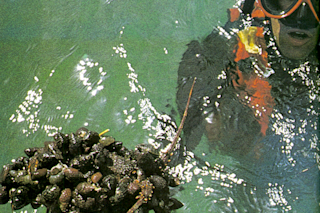The year was 1983. Star Wars: Return of the Jedi had just hit theaters, The Police’s “Every Breath You Take” topped the charts, and Amos Barkai was a new graduate student at the University of Cape Town in South Africa. He’d recently gotten his bachelor’s from Tel Aviv University, and was excited to start his graduate work under George Branch. Little did he know he was about to discover an ecological phenomenon that would earn him a prestigious paper in Science.
Branch had been investigating the effects of bird guano runoff from islands on life in the intertidal—the zone between high tide and low tide—and he was interested in seeing whether the effects extended into deeper waters. Since Barkai was an experienced diver (he’d worked as a professional diver for the Israeli Navy and as a commercial diver after that), Branch sent him 100 kilometers or so away to Saldanha ...














